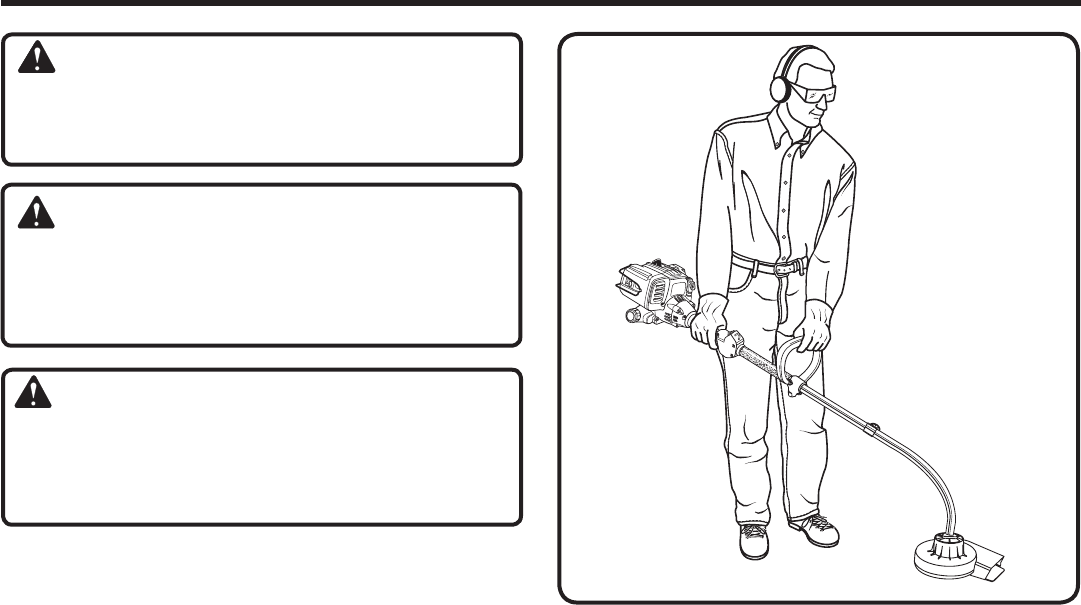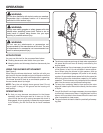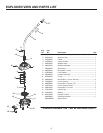
7
WARNING:
Do not allow familiarity with tools to make you careless.
Remember that a careless fraction of a second is
sufficient to inflict serious injury.
WARNING:
Always wear safety goggles or safety glasses with side
shields when operating power tools. Failure to do so
could result in objects being thrown into your eyes
resulting in possible serious injury.
WARNING:
Do not use any attachments or accessories not
recommended by the manufacturer of this tool. The use
of attachments or accessories not recommended can
result in serious personal injury.
APPLICATIONS
You may use this tool for the purposes listed below:
Clearing leaves and other debris from your lawn
Keeping decks and driveways free from leaves and pine
needles
USING THE BLOWER ATTACHMENT
See Figure 3.
When using the blower attachment, hold the unit with your
right hand on the rear handle and your left hand on the front
handle. Keep a firm grip with both hands while in operation.
The blower should be held at a comfortable position with
the rear handle about hip height.
NOTE: Carry the unit slightly above ground level. Do not
drag or push it along on the ground as the housing will
wear quickly.
OPERATING TIPS
So that you may become accustomed to the blower
operation, start the engine and let it warm up. At idle,
you will find that no air is moving because the clutch is
disengaged. As you gradually increase the engine speed
to full throttle, you will find that the air force increases
also.
OPERATION
The blower produces a strong air blast when operated at
full speed and the air force is directly controlled by the
engine speed.
�
In many situations it is not necessary to use the full power
of the blower; in fact it is not advisable in some applica
-
tions. When using the blower in tight quarters, such as
corners of patios and garages, full power is not usually
required. A somewhat slower speed will do the same job
effectively without the turbulence created by full power
operation. This turbulence only carries the blown material
back into the corner and produces floating dust.
To keep from scattering debris, blow around the outer
edges of a debris pile. Never blow directly into the center
of a pile.
�
You will find that it is no longer necessary to move objects
to effectively clean around them. A simple blast from the
blower will move debris from those difficult to reach and
often impossible to clean areas.
�
The ground level air blast is ideal for practically all sweep
-
ing jobs.
Fig. 3














